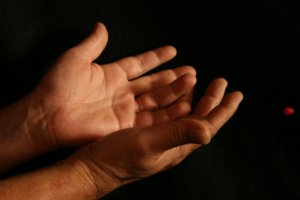What is EMDR? How does it work? Is it safe? What’s a session like? These are the four questions I hear most often about EMDR. I use two forms of EMDR but let’s take a look at what EMDR is first.
The original form of EMDR or Eye Movement Desensitization Routine was developed in the late 1980’s. It’s a widely used and effective method to resolve trauma. Its based on bilateral stimulation – holding a negative or painful memory while simultaneously experiencing a second stimulus. The second or bilateral stimulus involves visual, auditory, or tactile stimulation – watching finger or hand movements or lights move left and right, listening to alternating tones, tapping our knees, thighs or arms, or holding small vibrators in our hands.
EMDR is one of several therapy tools I may recommend. It isn’t just for PTSD or trauma. It’s also a safe and effective form of treatment for a variety of other problems – anxiety and panic attacks, depression, stress, phobias, sleep problems, complicated grief, addictions, pain relief including phantom limb pain, and self-esteem.
Honestly, no one really knows how EMDR works, but extensive research in 19 controlled studies points to the fact that EMDR works well and can be a very fast and effective way to treat PTSD, trauma, and other problems I’ve mentioned above. And, while it can be stressful, EMDR is generally very safe.
I use an analogy with my hands to describe how EMDR works. One hand represents negative or painful memories. The second hand represents the emotional and physical response I have to those memories. Before EMDR those memories and emotional/physical responses are tightly bound like two clasped hands. When (not if) an unpleasant memory comes up I immediately react to that memory, emotionally and physically, just as I did in the past. After EMDR, my hands are relaxed. Memories remain but without the emotional and physical response. EMDR relaxes or loosens the bound between memories and responses and helps reintegrate memories so they are in the past, where they belong, and not the present.


EMDR can also have a ripple effect. We might fully process one unpleasant memory and you’ll later find that several other unpleasant memories no longer have any impact on you.
An EMDR session lasts between 60 and 90 minutes. After you and I work together to help you better regulate your emotions and we’re both comfortable with other aspects of safety, we can get into an actual session. You and I will have already chosen one bilateral stimulation mode by this point.
In the original form of EMDR I’ll ask you 6 questions about an unpleasant memory of your choosing – a target memory, worst image of that target memory, emotion(s) related to that image, physical sensations, negative thought(s) about yourself related to the image, and level of distress you feel when holding the image. Your distress level must be 6 or above on a scale of 1-10 for EMDR to be effective. We’ll then do several 1 to 3-minute sets of bilateral stimulation, examining any other thoughts that come up in each set. We’ll repeat the process until your distress level with that memory drops to 0-1 and you have no physical sensations.
The “FLASH” technique is the second form of EMDR I use. Developed about 7 years ago, it’s still based on bilateral stimulation but involves briefly brining up a negative memory and then holding a positive emotional focus while simultaneously experiencing the bilateral stimulus. Seems a bit counter-intuitive but it works very well.
In “FLASH” I’ll ask you to bring up an unpleasant memory of your choosing where your distress is at least a 6 on a scale of 1-10 and then a positive emotional focus. We’ll focus on your positive emotional focus while tapping our knees, thighs or arms and every 10-20 seconds I’ll say “FLASH.” When I say “FLASH” you’ll rapidly blink your eyes 3 times. We’ll repeat this process 5-7 times, we’ll pause, and I’ll ask if you notice any changes or shifts in your negative memory. We’ll repeat this process until your distress with that memory is at 0-1 and you don’t have any physical sensations.
One caution about memories. I typically recommend you pick your worst or first memory. Occasionally people will find after processing a memory that there is an earlier related memory they’ve blocked. That memory may emerge in the session or several days later. This can happen with either form of EMDR. That memory is called a feeder memory and will need to be processed as well or you may continue to have problems.
We’ll briefly go back to that unpleasant memory in our next session, regardless of the type of EMDR we’ve done. If your distress is still at 0-1 we’ll move on to another memory. If not we’ll continue processing that memory.

